How to make shuumai / shumai dumplings
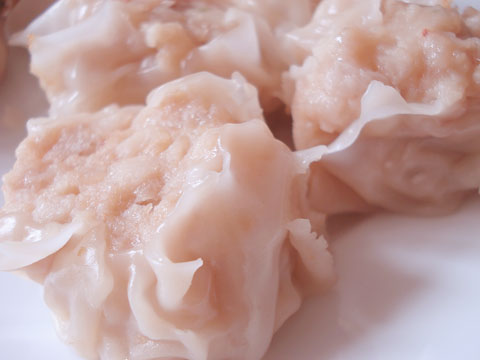
Shuumai or shumai dumplings (焼売)are a standby for dim sum, and are very well suited to bentos. They are small, freeze very well, and are a lot easier to make than gyoza dumplings.
You've probably encountered shuumai dumplings in the freezer section of Asian or Japanese grocery stores. Frozen ones are usually pretty good, but if you make them yourself you know exactly what you put in them. I just make a double or triple batch whenever I decide to make shuumai for dinner. (I sit myself down in front of the TV with my dumpling ingredients and go at it.) Just follow along with the photos and you'll be turning out lots of shuumai yourself.
Step-by-step: Basic shuumai
You will need:
- Shuumai skins. Shuumai skins are square, and are a bit smaller than wonton skins. This is a Japanese brand, but there are Chinese brands too. They are made simply of flour and water. (I guess you could make your own skins, but to me that crosses the line into Too Much Work.)
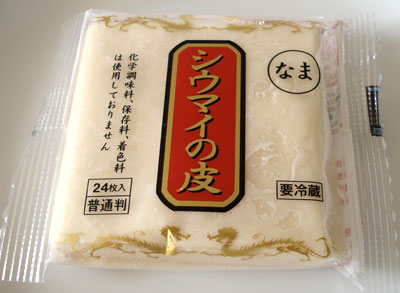
- Filling of your choice. I made two type of shuumai here, shrimp and vegan tofu. The recipes for both fillings are at the end of this article. Whatever filling you use, it should sort of stick together when formed into a ball.
Place a skin on your hand. (The skins do tend to dry out and become brittle quickly, so keep the rest covered with a damp cloth or under an upside down bowl while you work.)
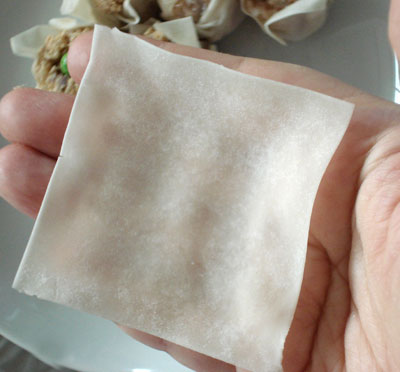
Put about 1/2 tablespoon of filling in the middle of the skin.
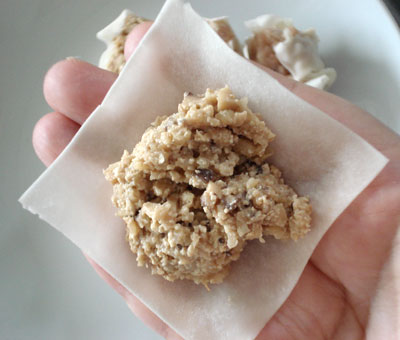
Make a circle with your thumb and forefinger.

Push the shuumai skin down into the circle formed by your finger and thumb.
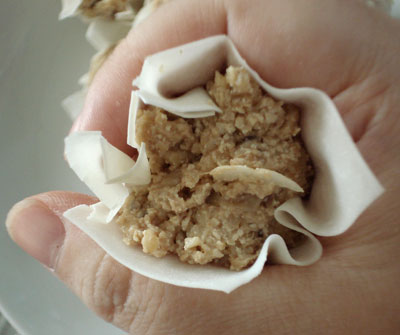
Squeeze the dumpling gently from the sides, while pressing the top and bottom.
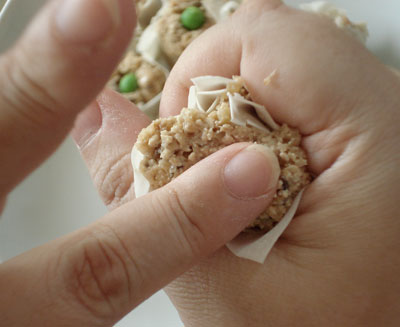
Here is a shuumai from the side.
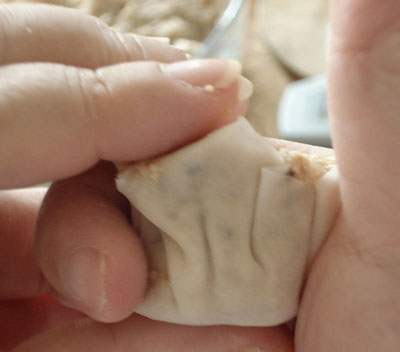
A completed shuumai. It should be a little cylinder shape that is taller than it's wide, since it will spread out a bit horizontally when you cook it.
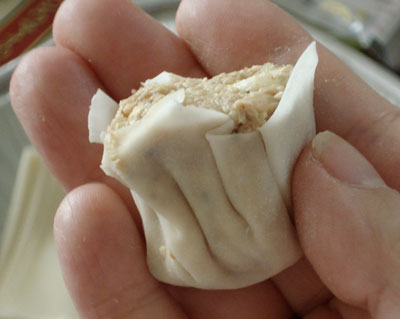
Optionally decorate the top with a green pea or an edamame. Frozen is fine.
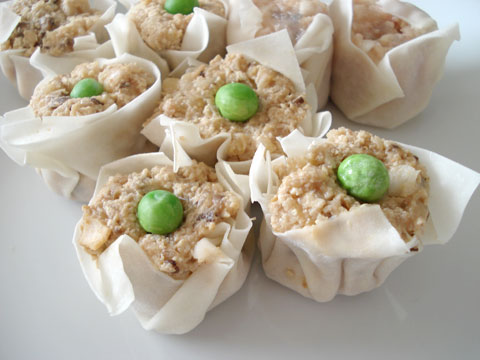
To cook, oil the bottom of a steamer and place the shuumai in there so that don't touch. (If you squish them in too tightly they will get stuck to each other.) Steam for 10-15 minutes.

Alternatively, you can steam-panfry them in a non-stick frying pan. Add a little oil to the pan, put in the shuumai, add water to about half the height of the shuumai, and cook with a lid on for about 10 minutes. This steam-panfrying method is similar to the one used for gyoza dumplings.
Here are the two types of shuumai I made. The vegan ones are decorated with green peas to differentiate them from the undecorated shrimp shuumai.
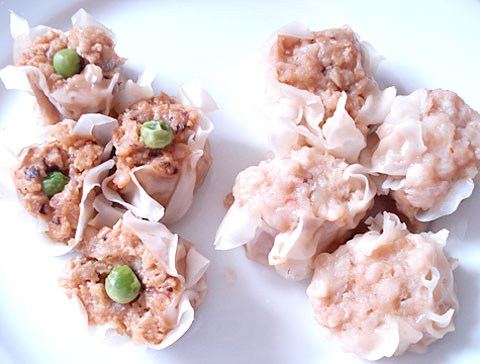
Freeze the steamed shuumai after they have cooled down to room temperature. You can then just microwave them for a few minutes covered with plastic wrap, steam them, or steam-panfry them to use for bento. You can also deep fry them for crispy dumplings.
You can eat shuumai just as they are, or with a dipping sauce. My favorite is plain mustard (mustard powder reconstituted with water) with soy sauce. Soy sauce with vinegar is also good.
Recipe: Shrimp shuumai filling
This makes about 25 to 30 shuumai, depending on how much you pack into each skin.
- 225 g / 1/2lb uncooked shrimp (fresh or frozen), roughly chopped
- 1/2 medium onion, finely chopped
- 120 g / 4 oz ground pork
- 1 tsp. grated ginger
- 1 Tbs. soy sauce
- 1 Tbs. shaoxing wine or mirin
- 1/2 Tbs. sesame oil
- Pinch of salt
- Ground pepper
- 1 Tbs. cornstarch or potato starch
Combine the pork, ginger, seasonings and cornstarch, and mix well until it forms a paste. Add the onions and shrimp and mix very well. Use to fill shuumai skins.
(Shaoxing wine is type of Chinese rice wine. Mirin or sake can be substituted, or sherry.)
Recipe: Vegan tofu filling
This makes enough to fill 25-30 dumplings.
- 1/3 cup cooked whole grain (such as brown rice, barley, wheat berries)
- 120 g / 4 oz extra firm tofu, very well drained
- 4 large fresh shiitake mushrooms, finely chopped
- 1/2 onion, finely chopped
- 1 tsp. grated ginger
- 1 Tbs. miso
- 1 Tbs. soy sauce
- 1 Tbs. sesame oil
- Ground pepper
- Pinch of sugar
- 1-2 Tbs. cornstarch or potato starch
Lightly fry the cooked grains in half of the sesame oil until the grains are a bit toasty. Let cool.
Mash the tofu until it's quite smooth. Add the rest of the ingredients and mix well. If it seems too wet, add a little more cornstarch or potato starch. Use to fill shuumai skins. Shuumai made with this filling will be softer than the shrimp shuumai. This mixture has quite a lot of flavor so you probably don't need a dipping sauce.
Any filling that holds together when formed into little balls will work as a shuumai filling. Experiment!
If you enjoyed this article, please consider supporting this site by becoming my patron via Patreon.
